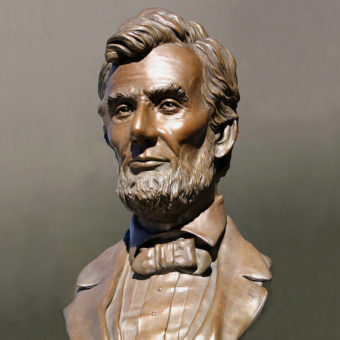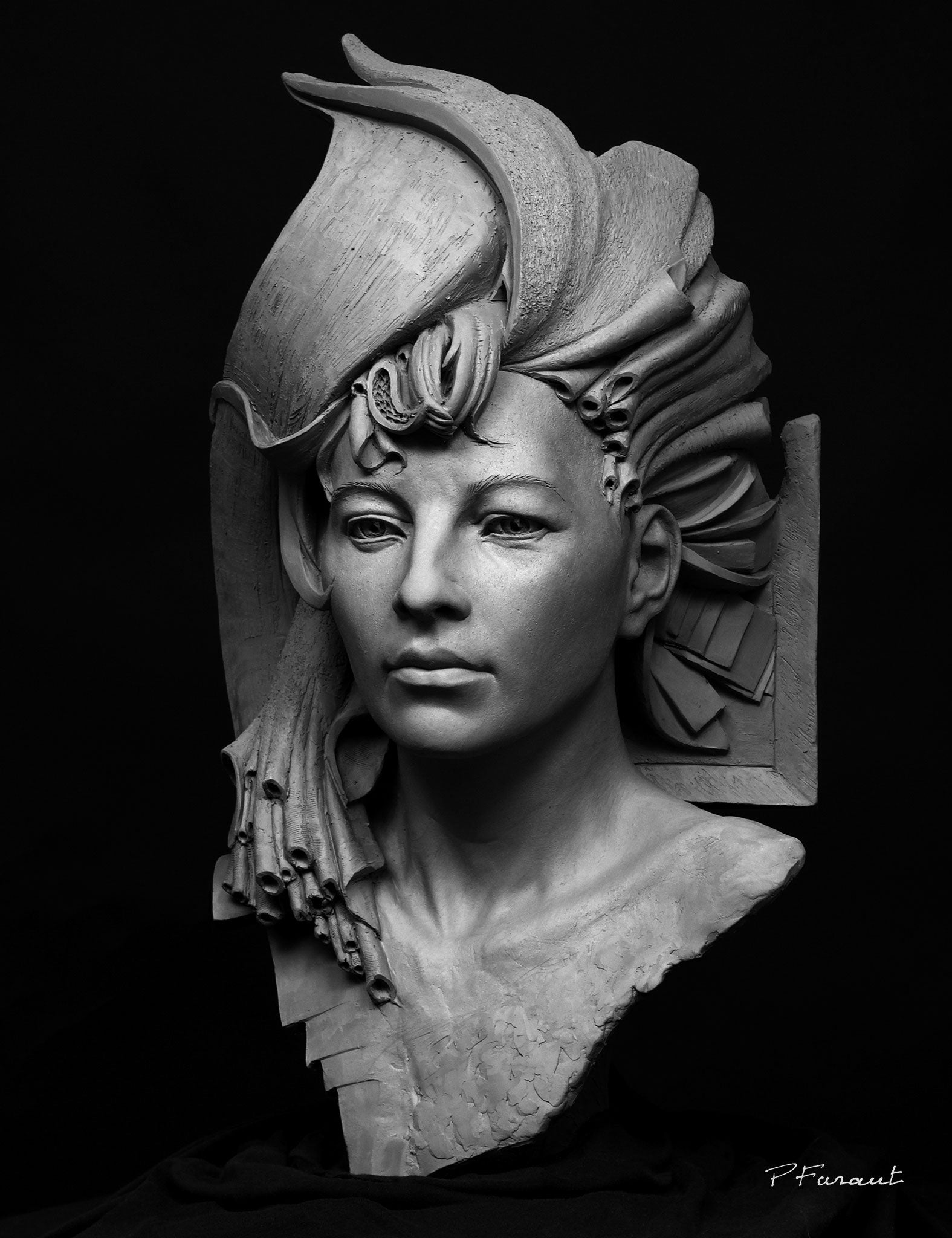Contemporary Marvels: Dive into the Globe of Contemporary Sculptures
Wiki Article
The Advancement of Sculptures: From Old to Modern
The Advancement of Sculptures: From Old to Modern.Sculpture, among the oldest kinds of art, has actually been an integral part of human people for millennia (Equine Sculptures). From the old human beings of Egypt and Greece to the modern era, sculptures have actually evolved, mirroring modifications in artistic techniques, materials, and social impacts. This journey through time traces the growth of sculptures, discovering the shifts stylishly, subject issue, and imaginative expression
Beginning with the ancient globe, sculptures crafted from rock and later bronze captured the significance of deities, rulers, and daily life. The Renaissance period witnessed a resurgence of classic sculpting strategies, as musicians sought to mimic the elegant forms of old Greek and Roman sculptures. In the modern-day era, musicians challenged conventional boundaries, accepting abstraction and trial and error with new materials.

This exploration will certainly delve into the diverse development of sculptures, revealing the abundant tapestry of creative expression throughout different periods and societies.
Old Sculptures: From Rock to Bronze
Old sculptures transitioned from being sculpted out of rock to being cast in bronze. Stone sculptures, while excellent in their very own right, were limited by the nature of the product.The intro of bronze as a medium for sculptures produced a transformation in imaginative expression. Bronze supplied carvers the chance to produce elaborate and realistic forms that were not feasible with stone. The procedure of casting bronze permitted the creation of multiple duplicates of a sculpture, allowing broader distribution and conservation of these artistic work of arts.
The shift from stone to bronze likewise saw a change in the topic of sculptures. While stone sculptures mostly illustrated gods, goddesses, and mythical figures, bronze sculptures started to mirror a broader array of subjects, including everyday people and pets. This development of subject showcased the flexibility and versatility of the bronze tool.
Renaissance Revival: Sculpting in the Timeless Style
The Renaissance resurgence of sculpture observed a revival in the timeless style, structure upon the improvements made throughout the transition from stone to bronze in ancient sculptures. Throughout this duration, artists sought to recreate the classical visual and perfects of elegance that were prevalent in old Greek and Roman sculptures.Among the crucial qualities of the Renaissance revival was the focus on naturalism and the human kind. Artists like Donatello and Michelangelo aim to catch the anatomical details and expressions of their subjects with extraordinary accuracy. They examined the body and integrated their observations into their sculptures, leading to natural and sensible representations.
One more important facet of the Renaissance rebirth was the expedition of viewpoint and depth. Artists made use of strategies such as contrapposto, where the weight of the body is shifted away, producing a sense of motion and dynamism. They also trying out various materials, consisting of marble and bronze, to attain a degree of class and intricacy in their sculptures.
The timeless style of the Renaissance revival had an extensive influence on later periods of art, functioning as a structure for the advancement of Western sculpture. It brought a renewed appreciation for the charm and majesty of the human type, and its tradition can still be seen in modern sculptures today.
Modernism and the Avant-Garde: Breaking Typical Boundaries

One of the key features of modernist sculpture was the emphasis on abstraction. Sculptors relocated far from sensible representations and instead focused on capturing the significance of the subject with streamlined forms and geometric shapes. This separation from standard representation enabled musicians to share their feelings and concepts in a more individual and subjective way.
Moreover, the progressive movement tested social norms and conventions, motivating musicians to experiment and press the limits of their art - Equine Sculptures. Sculptors began integrating unusual products such as discovered things, industrial products, and even natural components right into their job. This exploration of site link brand-new materials and strategies not just increased the possibilities for sculpture but likewise challenged the conventional notions of what can be taken into consideration art
Contemporary Sculptures: Checking Out New Materials and Concepts
With an emphasis on discovering brand-new products and concepts, modern sculptures have actually reinvented the field of art. Artists today are pressing the limits of conventional sculpture by experimenting and utilizing innovative materials with abstract ideas. These sculptures challenge standard ideas of significance, materiality, and type, inviting visitors to participate in a thought-provoking and new artistic experience.Contemporary artists are embracing a wide range of materials, including plastic, glass, steel, and even natural issue. Equine Sculptures. They are not limited to the traditional medium of stone or clay, enabling greater freedom of speech and trial and error. This shift towards non-traditional products has actually opened up brand-new opportunities for artists to develop sculptures that are vibrant, interactive, and aesthetically striking
In addition to checking out brand-new products, contemporary sculptures additionally delve right into complex and abstract concepts. Musicians are currently discovering styles such as identity, social problems, and the setting, making use of sculpture as an effective medium for social discourse and self-contemplation. These sculptures challenge visitors to think seriously and engage with art on a much deeper level, triggering discussions and prompting psychological feedbacks.
Worldwide Impacts: Sculptural Customs From Around The Globe

In old Egypt, sculptures were developed primarily for funerary and religious functions. The legendary sculptures of gods and pharaohs, such as the Great Sphinx and the breast of Queen Nefertiti, display the Egyptians' mastery of rock carving and their belief in the afterlife.
In ancient Greece, sculpture reached its height throughout the timeless duration. Influenced by the perfects of proportion, consistency, and elegance, Greek sculptures highlighted the human type and celebrated the achievements of heroes, gods, and athletes. The well-known sculptures of Aphrodite of Knidos and the Discobolus exemplify the Greeks' pursuit of excellence in sculptural art.
In old Rome, sculpture offered both political and creative objectives. Portrait Sculptor. Roman sculptures typically portrayed emperors, generals, and mythical numbers, reflecting the power and grandeur of the realm. The marble statue of Augustus of Prima Porta and the huge Arch of Constantine are remarkable instances of Roman sculptural success
Asian sculptural practices, particularly in India, China, and Japan, have additionally had a profound influence on the evolution of sculptures. Japanese sculptures, affected by Buddhism, emphasize simpleness and tranquility, seen in the tranquil statuaries of Buddha and the stylish art of bonsai.
The international impacts on sculpture continue to progress in the modern-day era. Artists today attract ideas from various sculptural traditions, integrating brand-new products, techniques, and ideas to produce thought-provoking and ingenious art work. The blend of various social influences has generated a vibrant and varied sculptural landscape, mirroring the interconnectedness of our global society. As we want to the future, it is specific that the worldwide influences on sculpture will certainly proceed to form and redefine this old art kind.
Final Thought
In final thought, the evolution of sculptures has seen a shift from ancient rock and bronze works to the timeless rebirth during the Renaissance. This was followed by the breaking of traditional boundaries through innovation and the progressive activity. Today, modern sculptures check out new materials and principles, while additionally attracting motivation from worldwide sculptural traditions. The journey of sculptures mirrors the ever-changing imaginative expressions and social influences throughout history.From the old worlds of Egypt and Greece to the modern age, sculptures have actually evolved, reflecting adjustments in imaginative strategies, products, and social impacts.Starting with the old globe, sculptures crafted from rock and later on bronze captured the essence of deities, leaders, and daily life.Ancient sculptures transitioned from being sculpted out of rock to being cast in bronze. While rock sculptures mainly portrayed gods, goddesses, and mythical figures, bronze sculptures began to reflect a more comprehensive variety of topics, consisting of day-to-day individuals and pets.In verdict, the advancement of sculptures has actually seen a change from old rock and bronze works to the classic resurgence during the Renaissance.
Report this wiki page